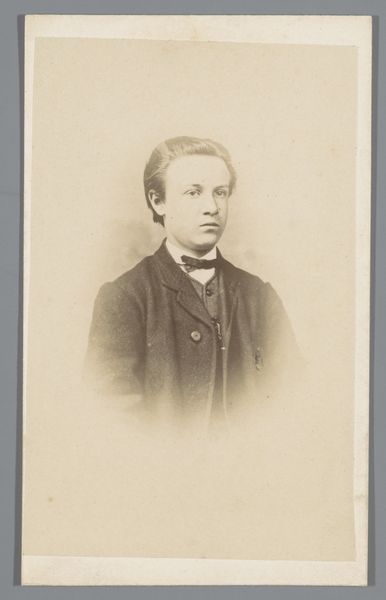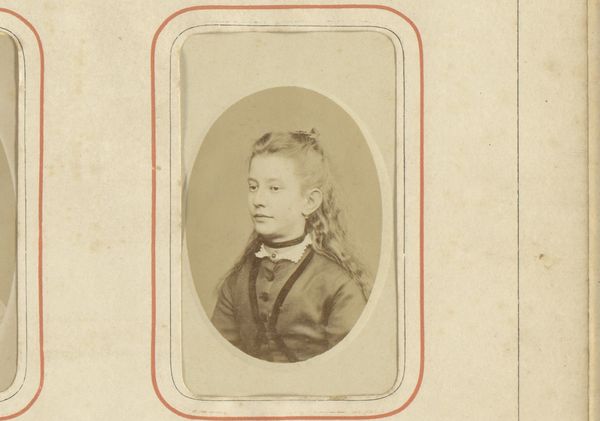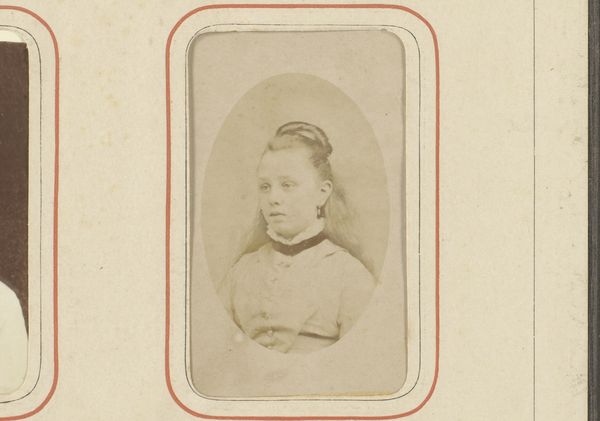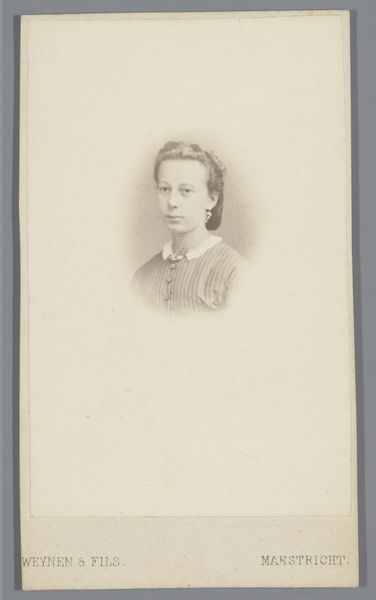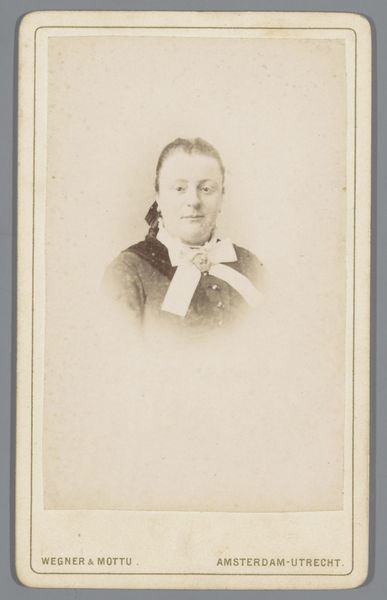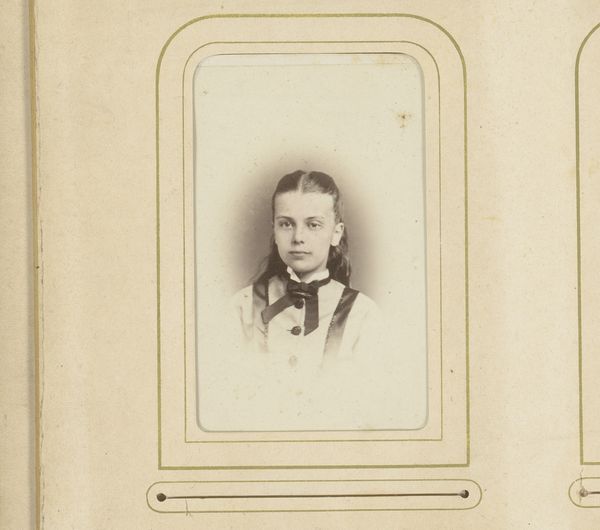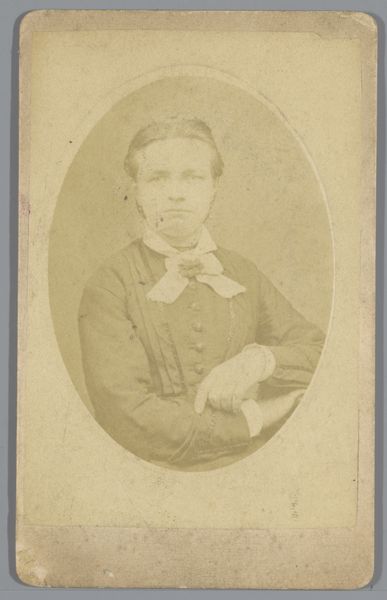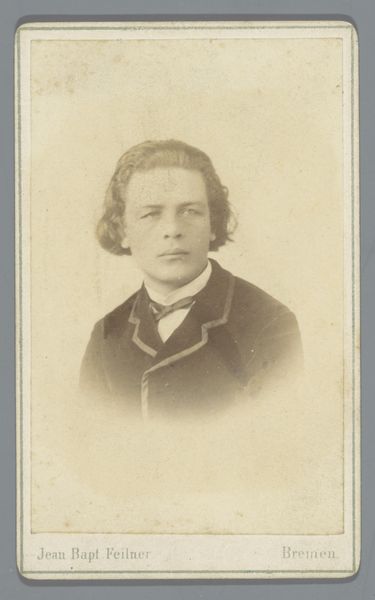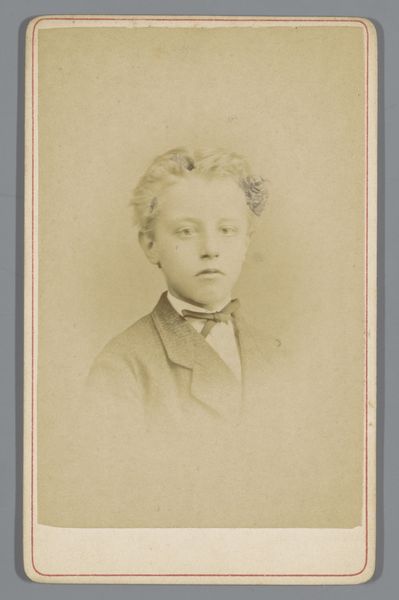
photography, albumen-print
#
portrait
#
photography
#
albumen-print
Dimensions: height 105 mm, width 63 mm
Copyright: Rijks Museum: Open Domain
Curator: Looking at this photograph, "Portret van een onbekend meisje" as it is called, created sometime between 1865 and 1885, you can't help but be struck by its simple yet poignant presence. Editor: It’s quite haunting, actually. There's a stillness, almost a resignation, in her gaze. The limited tonal range of the albumen print only adds to that feeling, doesn’t it? Curator: Yes, albumen prints, were so popular then—a readily accessible method. And photography was a fairly novel technology. Editor: So, it was becoming part of everyday life. But there’s also labor involved that we might miss: coating the paper, developing, printing. Each one of these images required a careful hand. I wonder about the economics, too. Who could afford to have their portrait taken, and what did it mean to commission an image like this? Was it for personal memento or for wider circulation? Curator: Those are relevant points. Portraiture became a signifier of middle-class aspirations and visibility in that era. You could see it as an assertion of identity within a rapidly changing social structure. Editor: And what about the sitter, then? Is it possible the photographer gave his directions as to her pose, the knot on her neck, and her hair arrangement? So she can become a consumer object... What about her lived experience, you think? Curator: A challenge with photographs, indeed! We may never know her full story, but even in its seeming simplicity, it offers insights into the period’s aesthetic values, the evolving role of women, and the rise of photographic representation as a social practice. Editor: It speaks volumes about a moment captured, and about the processes and circumstances that conspired to produce this small but potent image. It prompts more questions than it answers, I would say.
Comments
No comments
Be the first to comment and join the conversation on the ultimate creative platform.
